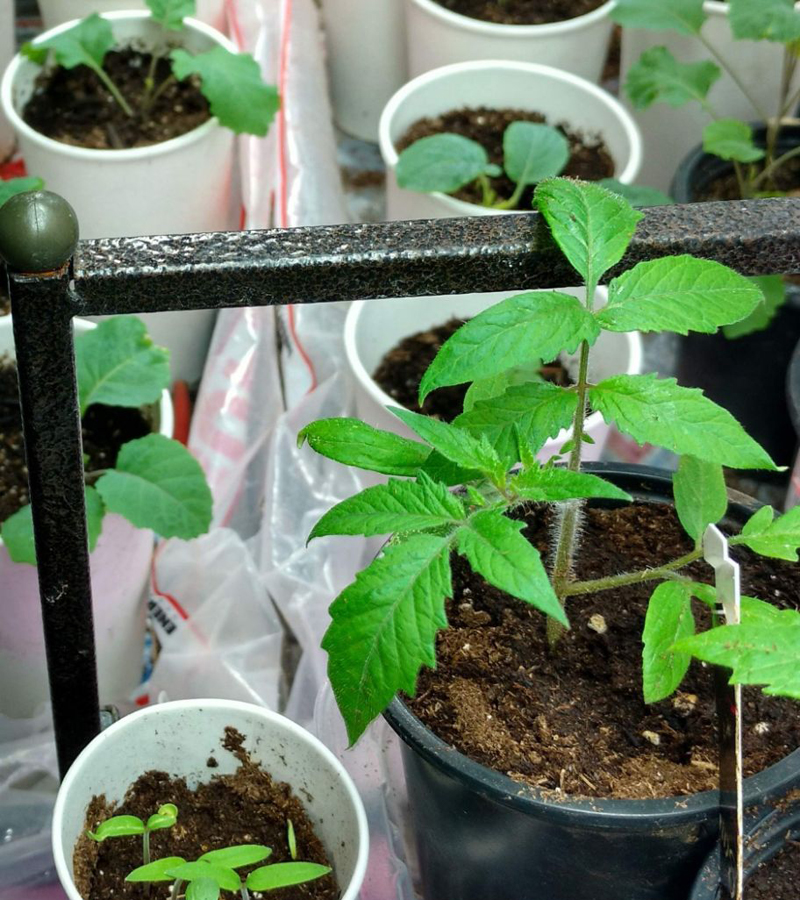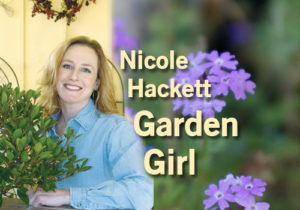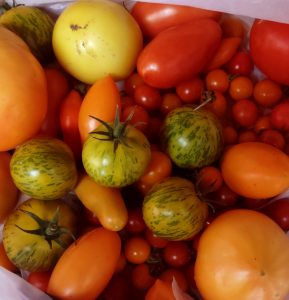Ready, set, plant – spring veggies are calling

 CLAYTON, CA (Mar. 19, 2024) — It’s nearly vegetable and herb planting time. Tomatoes, peppers, squash and cucumbers can safely be installed once evening temperatures have stabilized and are on the rise.
CLAYTON, CA (Mar. 19, 2024) — It’s nearly vegetable and herb planting time. Tomatoes, peppers, squash and cucumbers can safely be installed once evening temperatures have stabilized and are on the rise.
Tomatoes are the most sought-after veggies to grow. When advising folks on what types of tomatoes to install, we ask a lot of questions. Are you looking for the heavy, fleshy varieties? Are you interested in juicy ones for sandwiches? Do you make sauces, or like to pick and eat straight from the plant?
What you want to do with your tomatoes helps determine which varieties to install.
Varieties
 Early Girl is the most popular selection. It’s early ripening, successful and tasty. Early Girl gives huge crops of 4- to 6-ounce tomatoes. They only take 55-65 days after the flower sets to ripen, making them some of the earliest tomatoes you’ll enjoy.
Early Girl is the most popular selection. It’s early ripening, successful and tasty. Early Girl gives huge crops of 4- to 6-ounce tomatoes. They only take 55-65 days after the flower sets to ripen, making them some of the earliest tomatoes you’ll enjoy.
San Marzano Roma style tomatoes are for those who love to make tomato sauces. They have meaty flesh, fewer seeds and thinner skin than other selections. They are pear-shaped and bright red when ripe. Plants grow 36 inches tall and wide, and fruit should begin to ripen after 75 days.
All Roma style tomatoes are susceptible to blossom end rot, so you need to work agricultural lime into the soil prior to planting. The lime will increase the calcium and magnesium in the soil, which will curb the blackening at the bottom of your tomatoes.
For those interested in heirloom varieties, Cherokee Purple has been rewarding and productive. The bi-color purplish red fruit is sweet and fleshy. Brandywine tomatoes are a good producer that ripen 90 days after flowering. Sun Golds are a favorite cherry style tomato. Kellogg’s Breakfast is a gigantic, orange tomato with beefsteak flavors.
A passion for peppers
People also have a passion for pepper plants, which are extremely successful for both beds and containers. Many boast of great yields that last into the early days of fall. Hot pepper favorites are the jalapeno, habanero and Fresno chilis. Sweet favorites include Italian Marconi Red, shishito and banana. Standard installs feature the bell pepper family in all its many colors; Ancho poblano, which is great grilled or stuffed; and Anaheim, which lends its mild flavor to rice and chicken dishes.
Peppers do not take up that much room in your raised bed, with most reaching 18-24 inches tall and wide. They are also easy to grow in containers.
There’s more to squash than zucchini. Soft-skinned favorites are summer or scallop squash members, yellow straight and crook necks. Hard-shelled squash lasts for months in the pantry. They are simple to grow with proper irrigation. Acorn Table Queen, spaghetti and butternut squash are impressive looking in your garden, productive yielders and flavorful.
Cucumbers can be mysterious in the garden. They are productive some years and are a bust others. However, we keep trying.
Lemon and Armenian cucumbers are the two most popular selections. The lemon is a great personal-sized cucumber, and the fruit is mild. The Armenian cucumber is massive. Peel this selection and remove the seeds, and it’s perfect for those who love cucumber salads. Diva is a productive selection of Persian-style cucumbers that is easy to grab and munch.
Installing plants
Plant vegetables starts in well-amended, rich, replenished soil. Once installed, work a granular, organic tomato/veggie fertilizer into the soil. Make sure your fertilizer has calcium to prevent blossom end rot, which affects tomatoes and peppers.
Use granular fertilizer every six weeks. Between granular feedings, apply water-soluble fertilizer depending on the stage the plants are in. Give young plants something with more nitrogen, while use something with a bloom focus for flowering or fruiting plants.
Consider installing pollinator plants and herbs near your veggie gardens to help coax the bees to your plants. Thyme, salvia, basil and oregano are herbs that can be incorporated as pollinator plants. Keep oregano and thyme in separate containers since their roots can be bossy.
Coneflower, sunflower, Agastache, calendula, cosmos and milkweed also have blooms that bees find irresistible.
Contact Nicole Hackett with questions or comments by email at gardengirl94517@yahoo.com

Nicole Hackett
Nicole is the Garden Girl at R&M Pool, Patio, Gifts and Garden. You can contact her with questions or comments by email at gardengirl94517@yahoo.com
